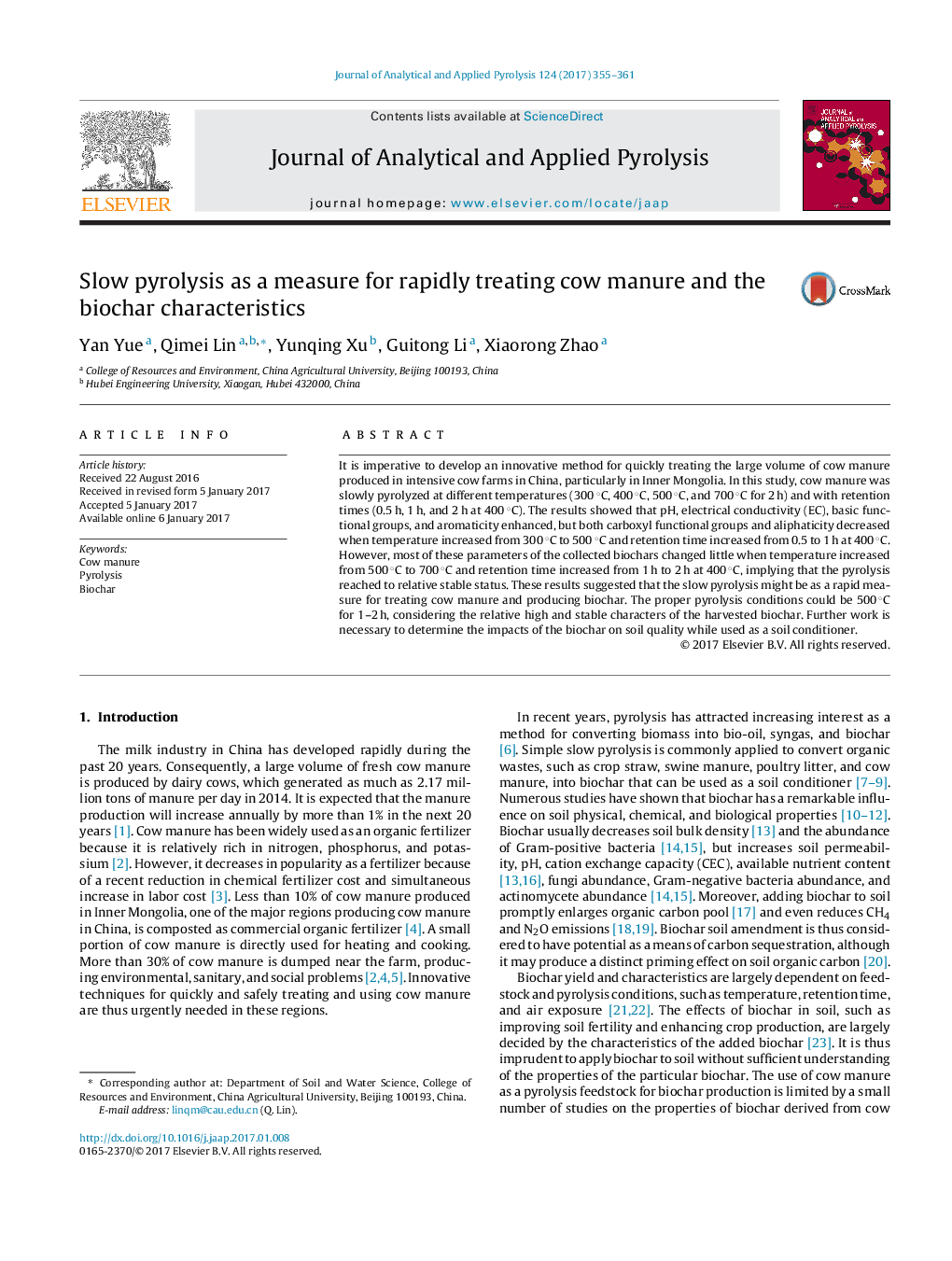| Article ID | Journal | Published Year | Pages | File Type |
|---|---|---|---|---|
| 5134606 | Journal of Analytical and Applied Pyrolysis | 2017 | 7 Pages |
â¢More than half million tons of fresh cow manure, 30% of the total, are daily dumped near cow farms, which induces serious environmental, sanitary, and social problems.â¢Slow pyrolysis shows high value as an innovative measure for rapidly treating cow manure.â¢The biochar produced at 500 °C for 1 h has some specific characters which may imply that the biochar could be used as a soil conditioner to improve soil fertility and facilitate carbon sequestration.
It is imperative to develop an innovative method for quickly treating the large volume of cow manure produced in intensive cow farms in China, particularly in Inner Mongolia. In this study, cow manure was slowly pyrolyzed at different temperatures (300 °C, 400 °C, 500 °C, and 700 °C for 2 h) and with retention times (0.5 h, 1 h, and 2 h at 400 °C). The results showed that pH, electrical conductivity (EC), basic functional groups, and aromaticity enhanced, but both carboxyl functional groups and aliphaticity decreased when temperature increased from 300 °C to 500 °C and retention time increased from 0.5 to 1 h at 400 °C. However, most of these parameters of the collected biochars changed little when temperature increased from 500 °C to 700 °C and retention time increased from 1 h to 2 h at 400 °C, implying that the pyrolysis reached to relative stable status. These results suggested that the slow pyrolysis might be as a rapid measure for treating cow manure and producing biochar. The proper pyrolysis conditions could be 500 °C for 1-2 h, considering the relative high and stable characters of the harvested biochar. Further work is necessary to determine the impacts of the biochar on soil quality while used as a soil conditioner.
